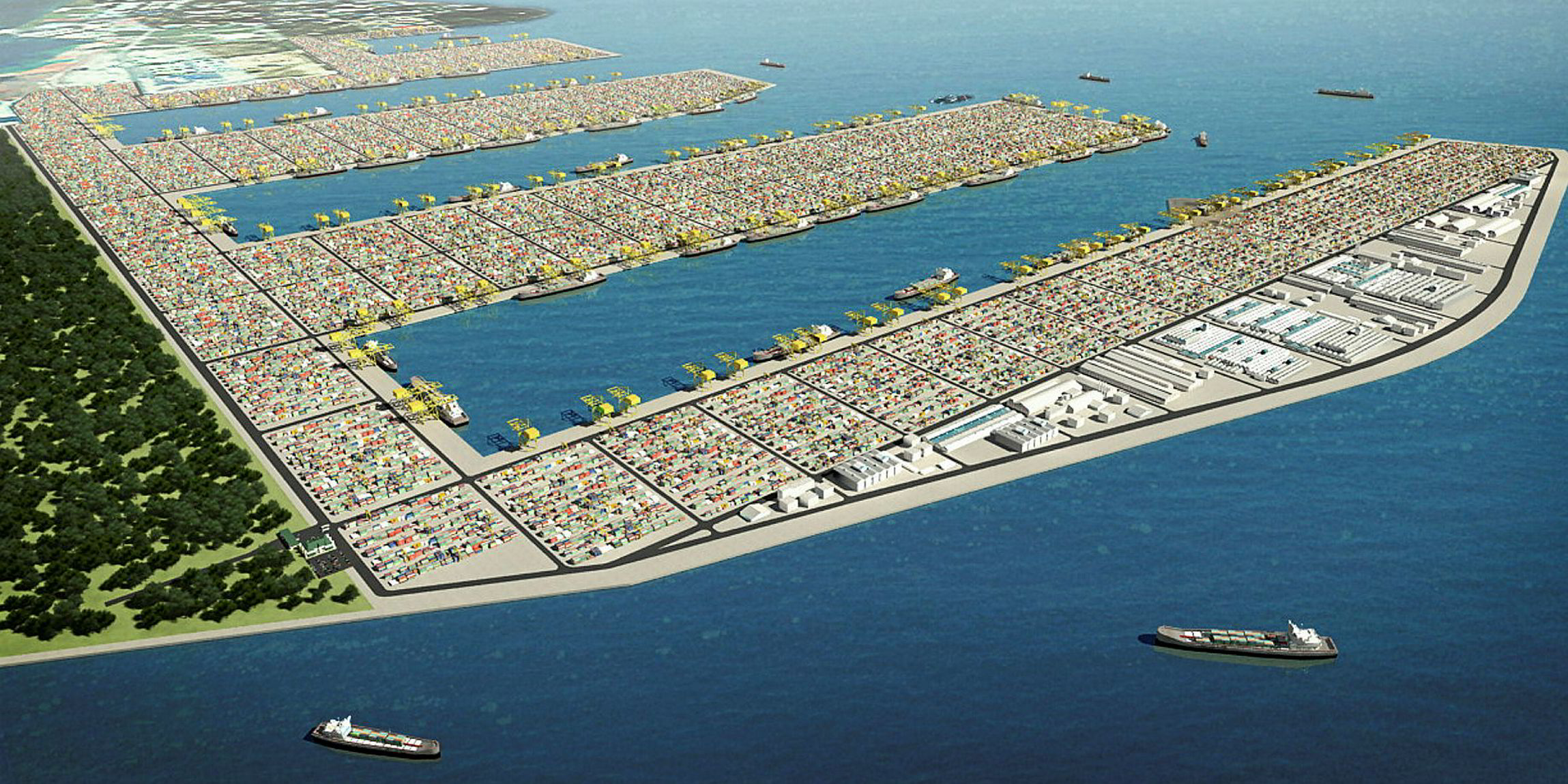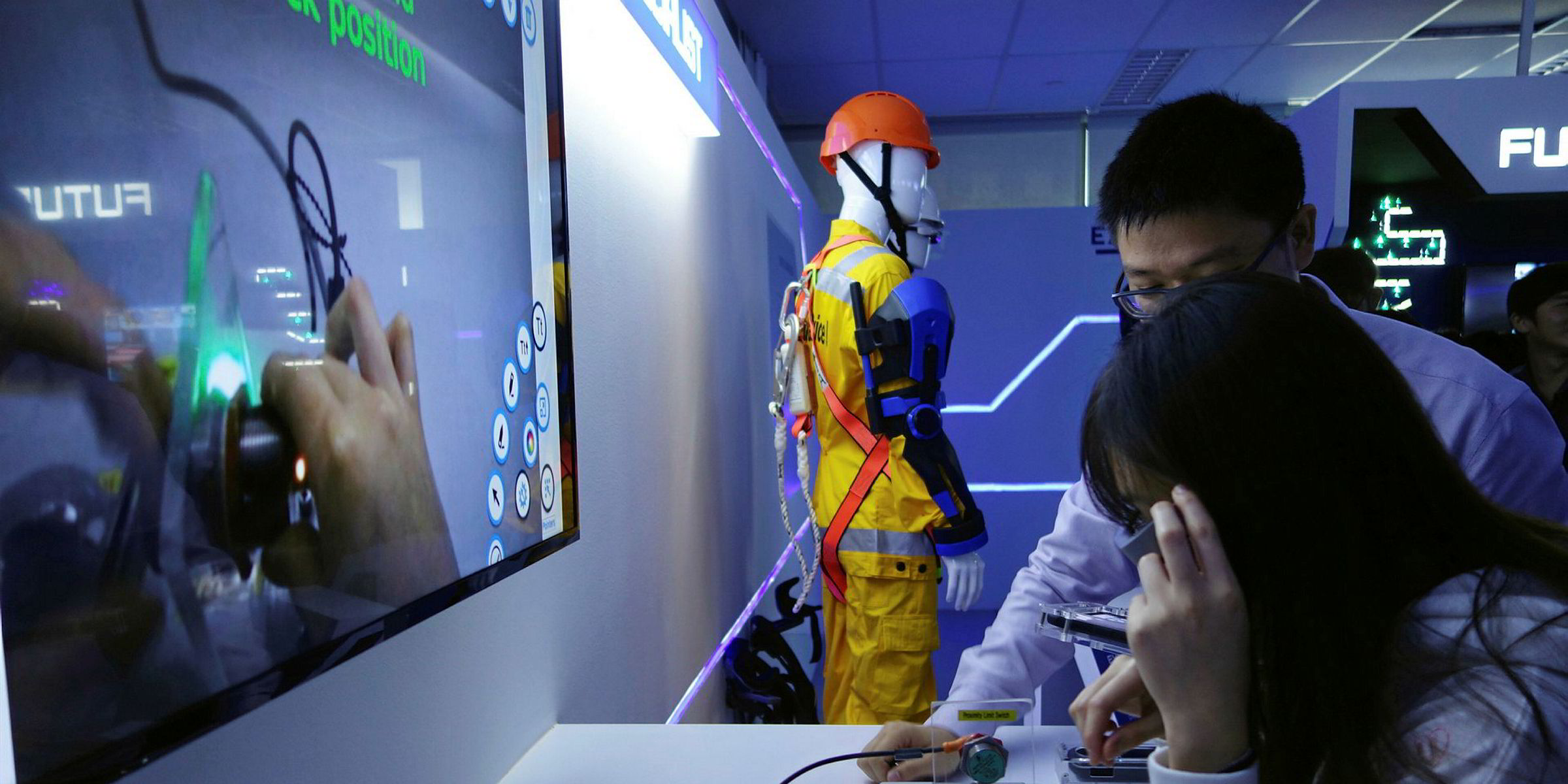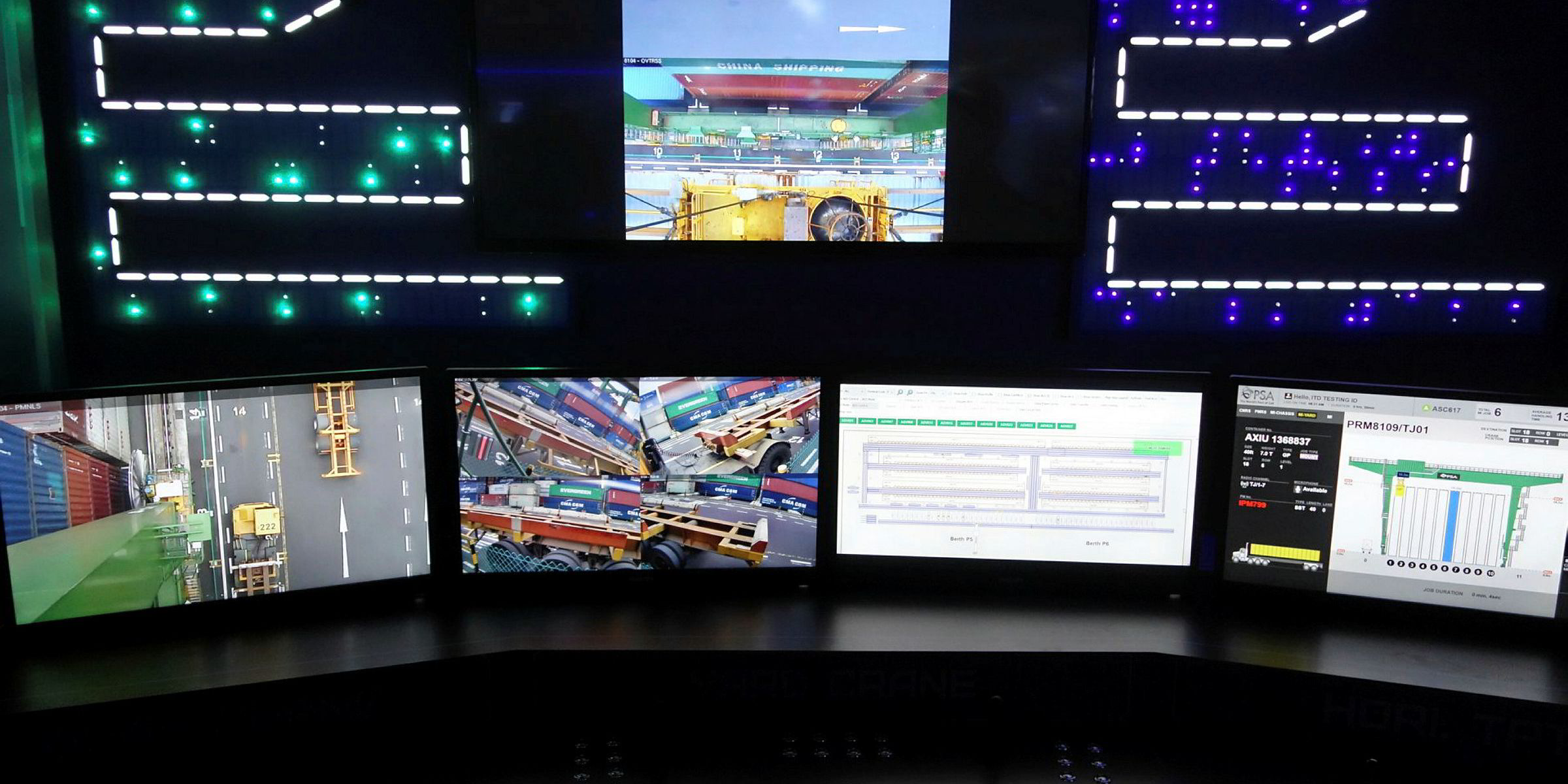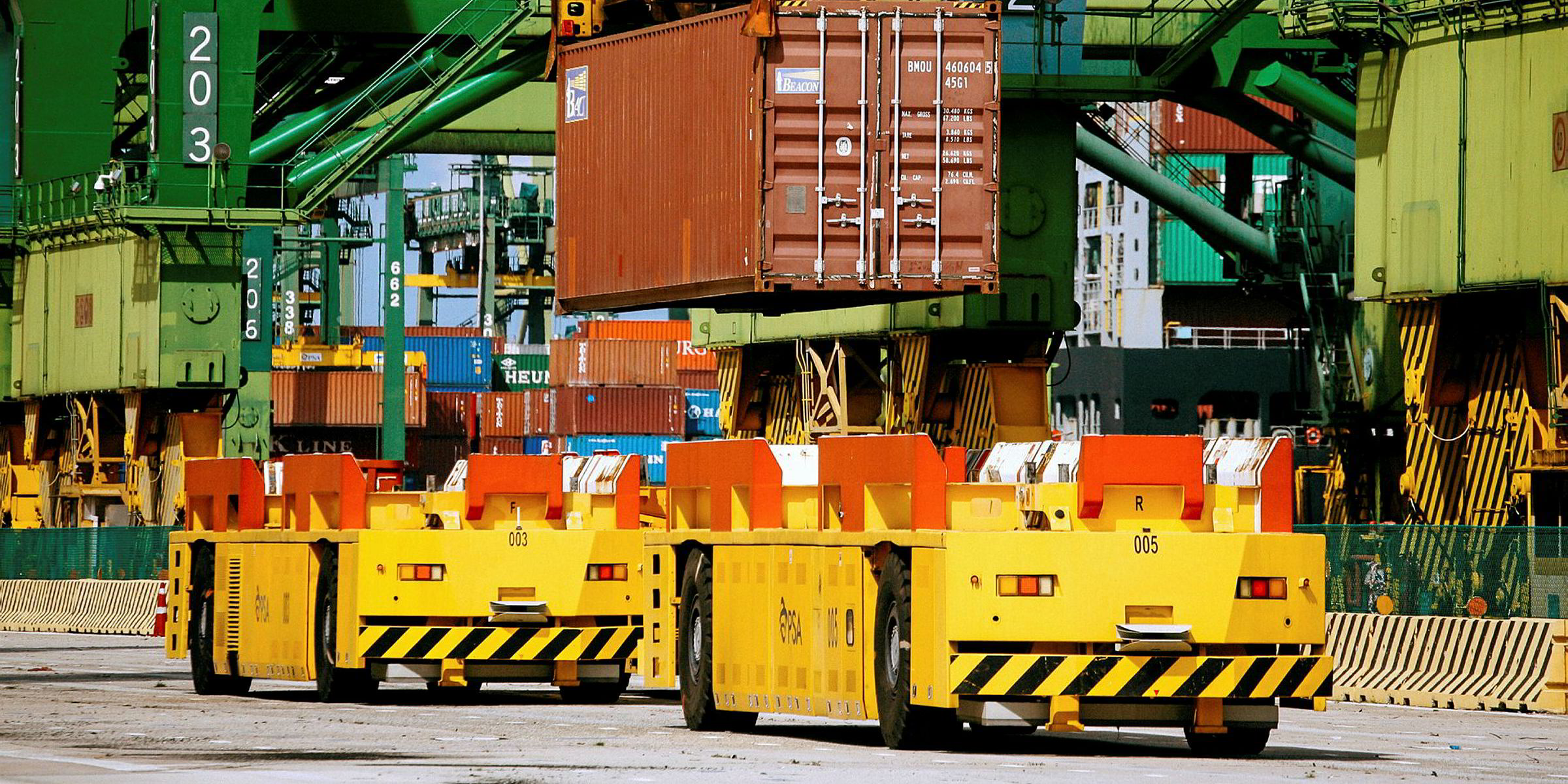Major container port operators across the world are investing heavily in creating smart facilities, using technology to improve efficiency and safety.
And many aspects of these developments are seen as having the potential to do the same for shipping.
An exhibition this month by Singapore port operator PSA Corp showed off the many smart technologies that it plans to use to make its new container mega-terminal Tuas, one of the most advanced in the world.
Dubbed the "Intelligent Port of the Future", the exhibition detailed PSA’s plans, as well as the transformation of jobs through innovation.
The company's vision calls for a generation of highly trained, tech-savvy workers controlling a complex system of automated terminals and equipment.
The new technology showcased included battery-powered autonomous guided vehicles to transport containers between the yard and the dock.
These are to be equipped with robotic arms to automatically fix or remove twistlocks to the base of containers, which would then be loaded on and off ships by remote-controlled cranes.
PSA’s investment in new technology is a small part of the multibillion-dollar cost of the new Tuas Port.
When all four phases are completed by 2040, Tuas will have an annual throughput of 65 million containers, more than double what Singapore’s existing terminals currently handle.
The first phase, scheduled for completion in 2021, is costing SGD 2.42bn ($1.8bn). The intention is eventually to consolidate all of Singapore’s container port activities in Tuas.
These and other innovations, PSA argued, would result in higher labour productivity, with automation enabling staff to manage multiple equipment and systems. In addition, increased mechanisation would reduce fatigue and workplace injuries.

Many of the new technologies on display could be of interest to shipowners as there are crossover benefits that could significantly increase the efficiency of ships and the safety of their crews.
New developments in metal 3D digital printing could reduce the need for ships to keep large inventories of spare parts that take up space and tie up capital.
Drones could have important applications, too, especially in getting to equipment in hard-to-reach areas of ships that require complex inspections that would be difficult or dangerous for crews to undertake manually.
Drone inspections would also minimise disruption to operations, as crews could perform inspections at a safer distance, eliminating the time-consuming preparations needed to work at height or enter operational areas.
Digitalised equipment manuals linked to augmented reality (AR) smart glasses would provide crews working on specialised equipment with live visual aids and possibly even off-site assistance.
PSA’s AR technology can help the wearer visualise a piece of equipment’s components and trace its defects. The ability to see visual indications and communicate with experts in a "mixed-reality" space, it said, will ease troubleshooting and reduce the downtime of faulty equipment.
Smart wearables could be easily adopted to provide a safer, healthier onboard workplace. Powered exo-skeletons — wearable mobile machines driven by a system of motors and linkages allowing for limb movement with increased strength and endurance — would allow crews to perform physically demanding jobs, while reducing fatigue and cutting the risk of injury.

Other smart wearables readily adaptable for use at sea include helmet-mounted, hands-free voice communication systems, body cameras, mobile command centres and biosensors.
Developing smart technology systems does not come without a substantial cost, however. Although that may be within the financial means of large port terminal operators and the top shipping companies, it would make most small to medium-sized shipowners baulk.
PSA has powered ahead with its smart technology development as a collaborative effort. Some technology has been generated in-house, or through partnerships with tech companies. Others were developed through an incubator project that has seen the company plough SGD 20m ($15.1m) into PSA unboXed, an entity that seeks to invest in start-ups that are keen to create innovative logistics solutions fusing information and communications technology, as well as engineering and transaction solutions for the maritime industry.
Participants in these collaborations attending PSA’s exhibition were quick to stress to TradeWinds that, as with any technology, development costs are high, but the price drops rapidly once that technology is established and becomes widely used.
They suggested that sooner, rather than later, the technology on display in Singapore will be available to a wider audience at an affordable price.




